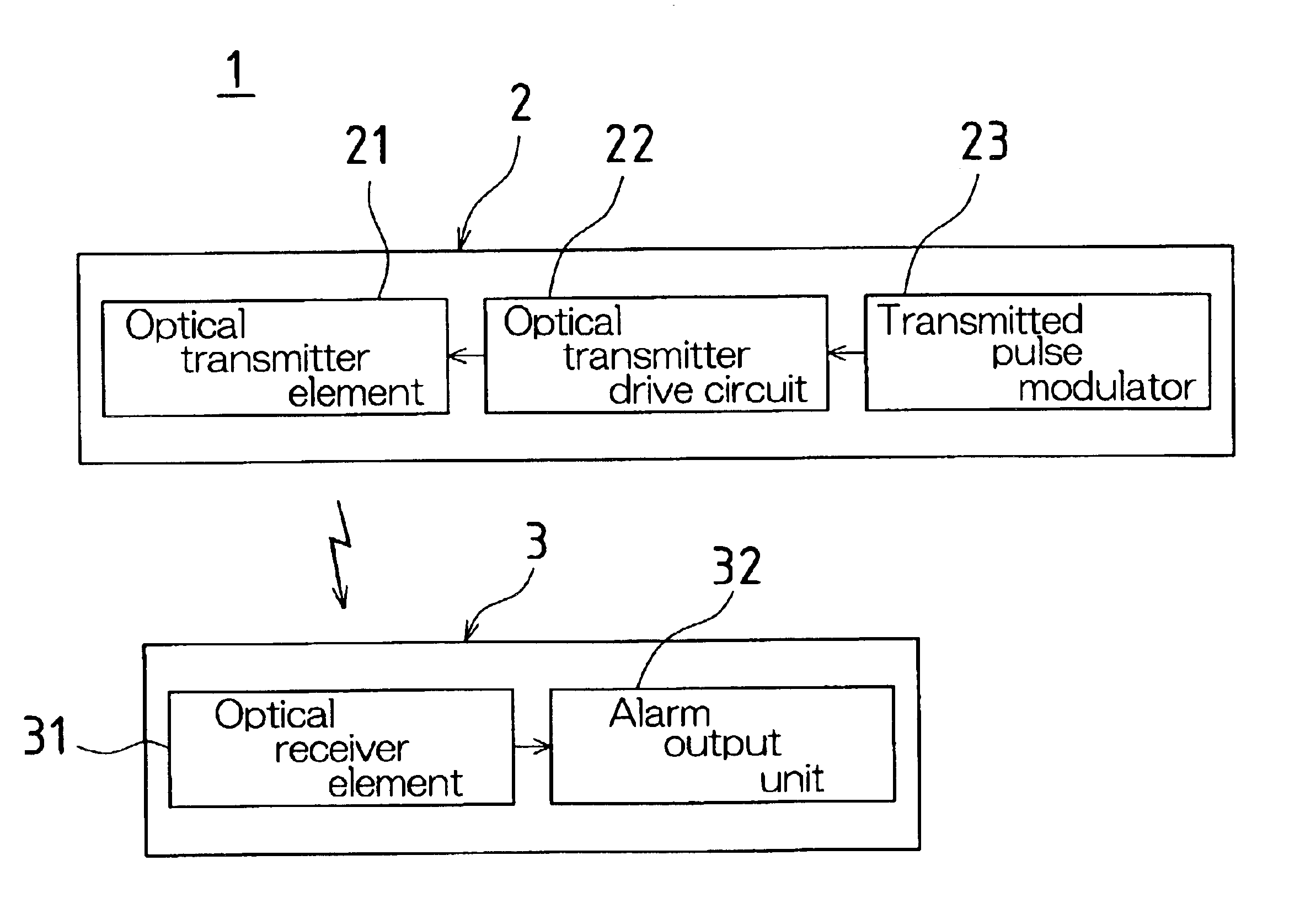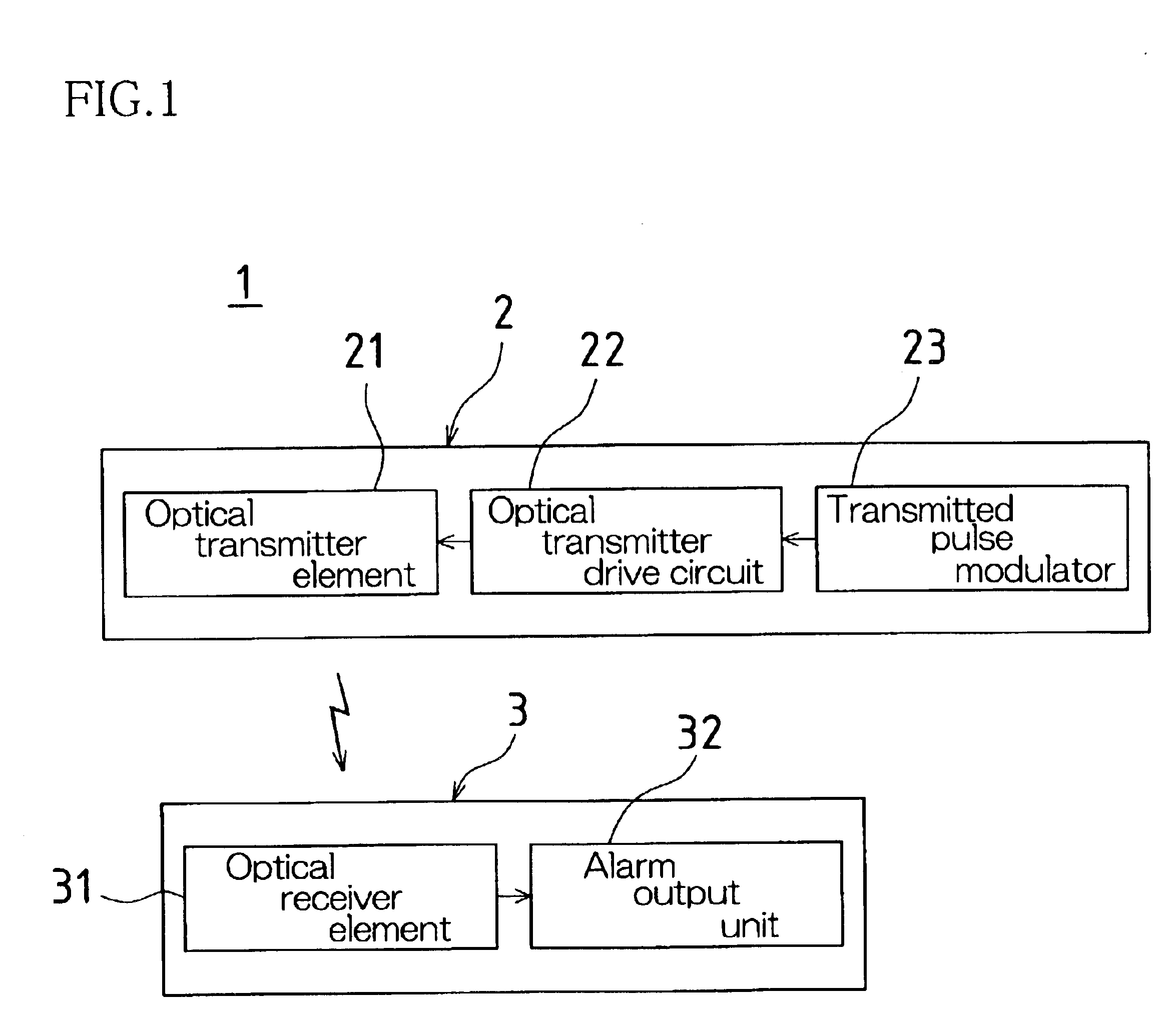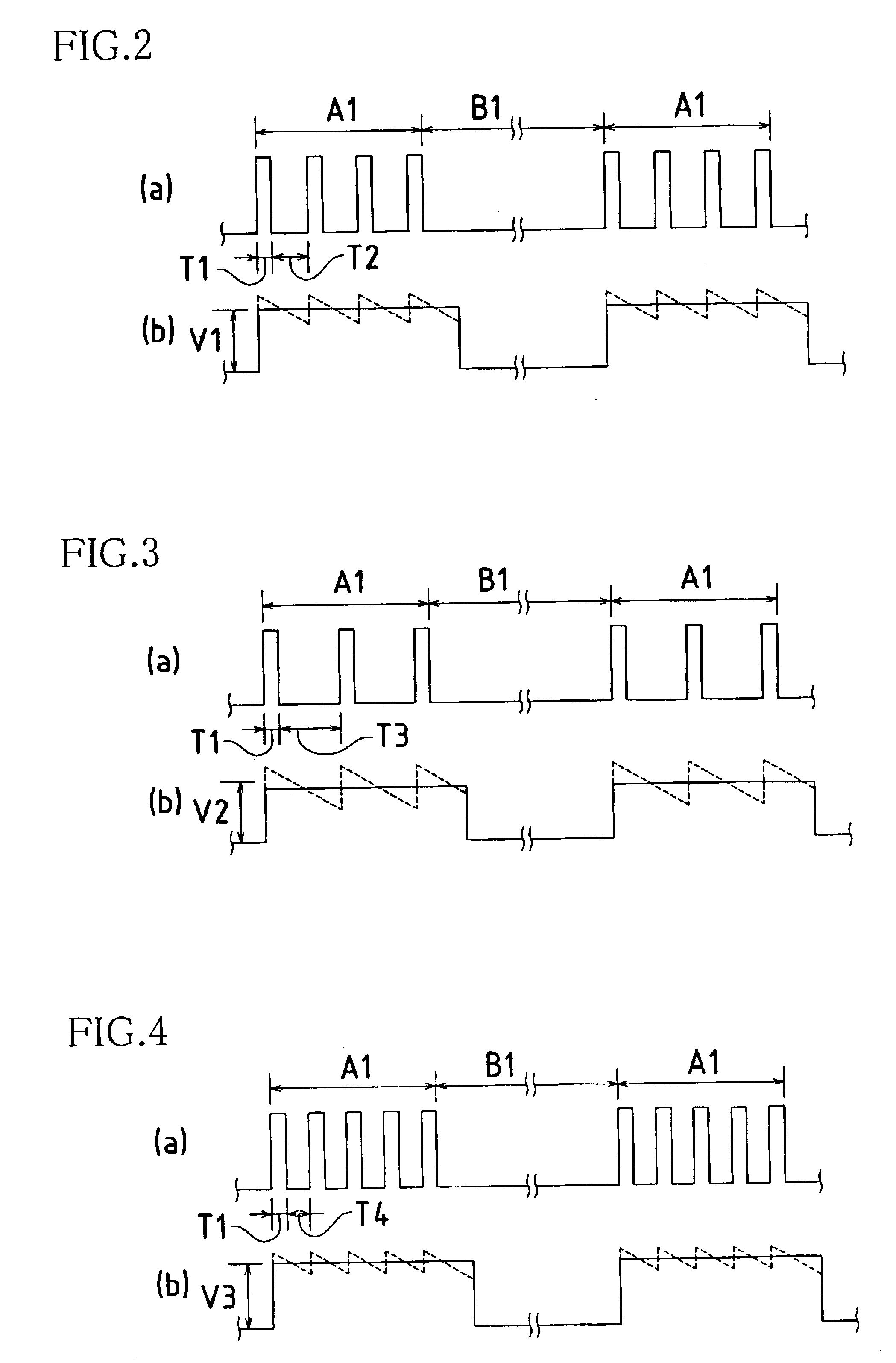Active infrared sensor
a technology of infrared sensor and infrared sensor, which is applied in the direction of photometry using electric radiation detectors, optical radiation measurement, instruments, etc., can solve the problems of increasing the likelihood of occurrence of undetected intrusion events, preventing satisfactory detection, and undetected intrusion events, so as to inhibit the increase of infrared sensor costs
- Summary
- Abstract
- Description
- Claims
- Application Information
AI Technical Summary
Benefits of technology
Problems solved by technology
Method used
Image
Examples
first embodiment
[0038]A first embodiment of the present invention will now be described. FIG. 1 is a block diagram showing the constitution of an active infrared sensor 1 according to the first embodiment of the present embodiment. Such an active infrared sensor 1 might be installed at a prescribed protected area, and might output an alarm to a system control panel (not shown) which activates a security camera (not shown) or which contacts a security company when the entry of a person into such protected area is detected.
[0039]As shown in FIG. 1, the active infrared sensor 1 is such that optical transmitter(s) 2 serving as optical transmitter means and optical receiver(s) 3 serving as optical receiver means are arranged in protected area(s) in opposing fashion with prescribed distance(s) therebetween along an optical axis or axes traveled by infrared pulses which are transmitted by the optical transmitter(s) 2 and described below.
[0040]Such an optical transmitter 2 is equipped with optical transmit...
second embodiment
[0056]A second embodiment of the present invention will now be described. In the infrared sensor of the foregoing first embodiment, the respective optical transmission patterns were stored in advance at transmitted pulse modulator 23. In the second embodiment, desired optical transmission pattern(s) is / are generated at the transmitted pulse modulator 23. As the constitution of the second embodiment is in other respects similar to that of the first embodiment, the description here of the second embodiment will be confined to that structure which is responsible for the generation of the optical transmission pattern(s).
[0057]As shown in FIG. 9, the transmitted pulse modulator 23 of the second embodiment is equipped with first and second sending circuits 23A, 23B. The first sending circuit 23A is a circuit for determining the frequency or frequencies of infrared pulses which are output during infrared output period(s). The second sending circuit 23B is a circuit for determining the dura...
third embodiment
[0062]A third embodiment of the present invention will now be described. The third embodiment relates to a constitution for causing the optical output of the transmitted infrared signal(s) to be varied automatically. As the constitution of the third embodiment is in other respects similar to that of the foregoing first embodiment, the description here of the third embodiment will be confined to that structure which is responsible for causing the transmitted optical output to be varied automatically.
[0063]As shown in FIG. 10, the optical transmitter 2 of the third embodiment is provided with activation circuit(s) 24 serving as activation means for activating the ability of the transmitted pulse modulator(s) 23 to vary the transmitted optical output. Optical transmission pattern(s) selected as described above is / are again selected through the action of this activation circuit 24 in correspondence to the environmental conditions and / or the conditions under which infrared sensor 1 is us...
PUM
 Login to View More
Login to View More Abstract
Description
Claims
Application Information
 Login to View More
Login to View More - R&D
- Intellectual Property
- Life Sciences
- Materials
- Tech Scout
- Unparalleled Data Quality
- Higher Quality Content
- 60% Fewer Hallucinations
Browse by: Latest US Patents, China's latest patents, Technical Efficacy Thesaurus, Application Domain, Technology Topic, Popular Technical Reports.
© 2025 PatSnap. All rights reserved.Legal|Privacy policy|Modern Slavery Act Transparency Statement|Sitemap|About US| Contact US: help@patsnap.com



